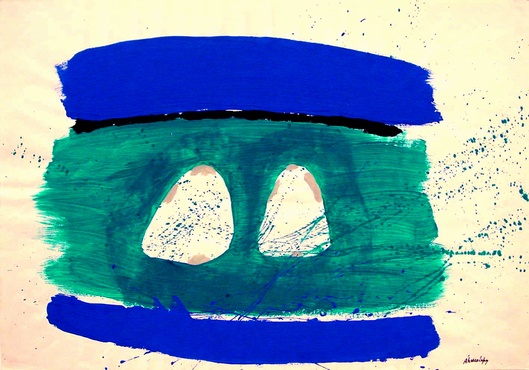With an unique symbolic glossary marked by a constant hybridity between the pictorial and the word, Álvaro Lapa will always be the artist of the spoken shape and the shapeless word, of the insurrection against virtuosity and aesthetic heritage. Ten years after his death, we continue to unveil the enigmas that the artist and poet left us so that, with no map or pudency, we can return to the same unmeasured inner landscape.
Álvaro Lapa (Évora, 1939 - Porto, 2006) was a distinguished Portuguese painter and poet. In 1956 he moves to Lisbon where he studies philosophy at Faculdade de Letras da Universidade de Lisboa, which has deeply marked his work. His first solo exhibition was in 1964 at Galeria 111 in Lisbon. His artistic career is marked by the mixing of painting with writing and by the influence of European and North-American abstract-expressionist painting, such as Robert Motherwell's, and of European surrealism, influences that are manifest in the formal deconstruction and in the aesthetic autonomy. Lapa's work is marked by the use of biographical and literary references which gave rise to the series "Cadernos", a work that refers to authors such as Rimbaud, Kafka, Joyce, Sade and Burroughs. Lapa's painting is historically located in a subversive evaluation of painting canons. His literary work gathers art theory studies and surrealistic poetry. Álvaro Lapa's recognition became manifest with Grande Prémio EDP in 2006 and with the retrospective exhibitions that took place in Fundação de Serralves and in Fundação Calouste Gulbenkian.



